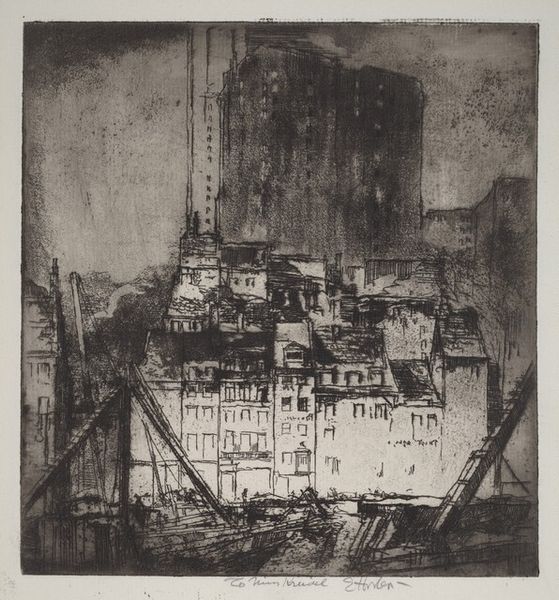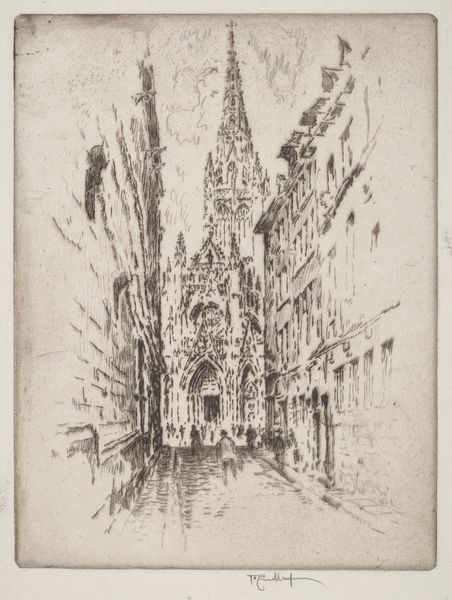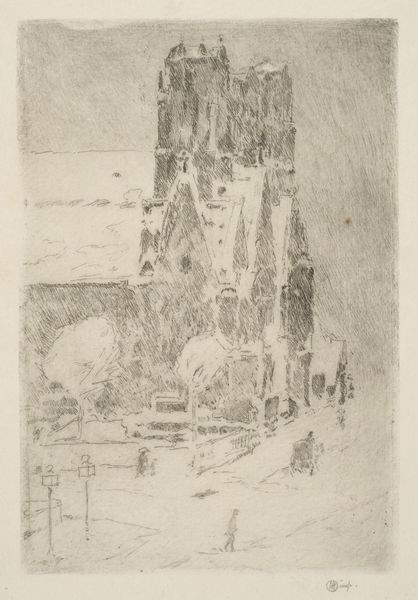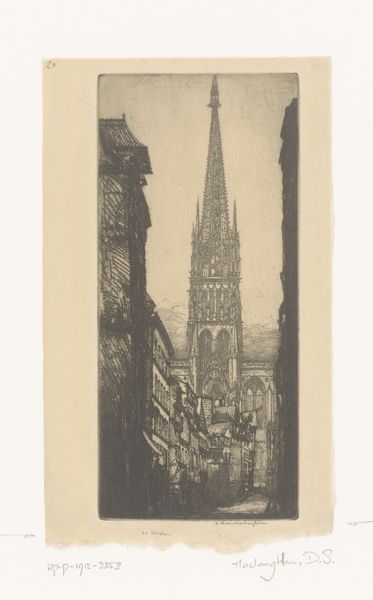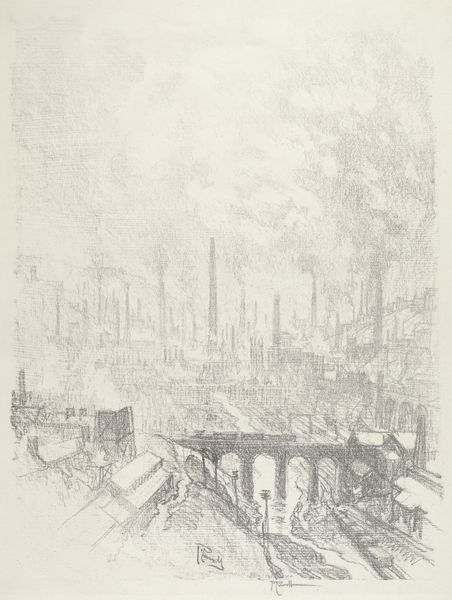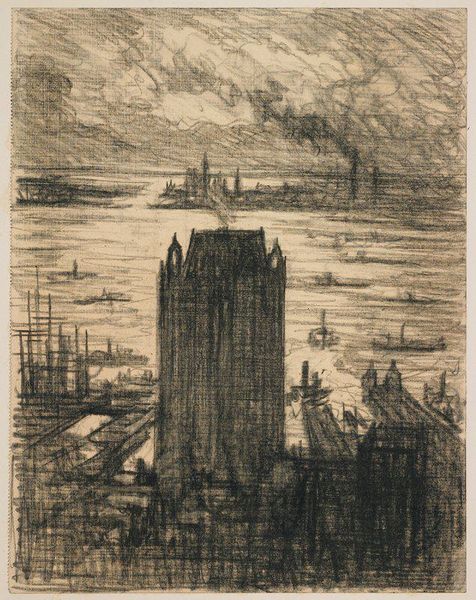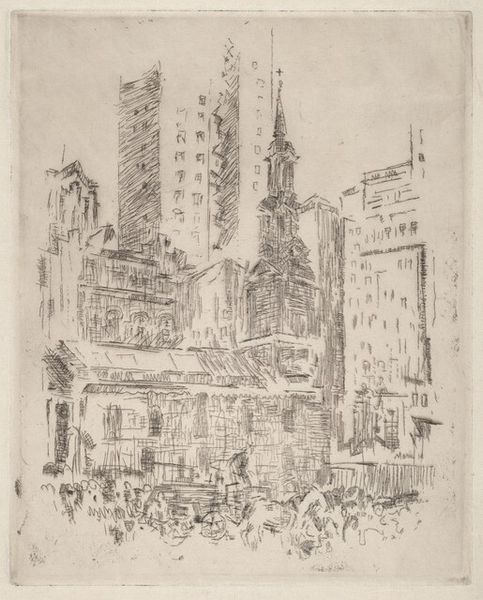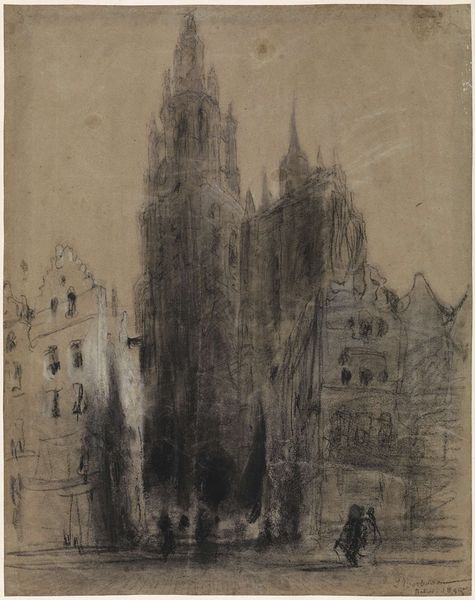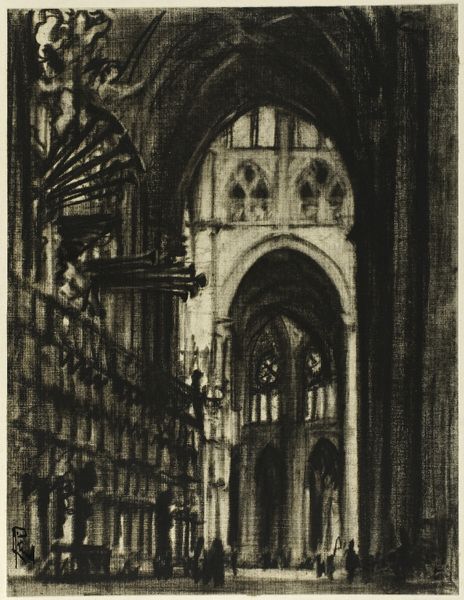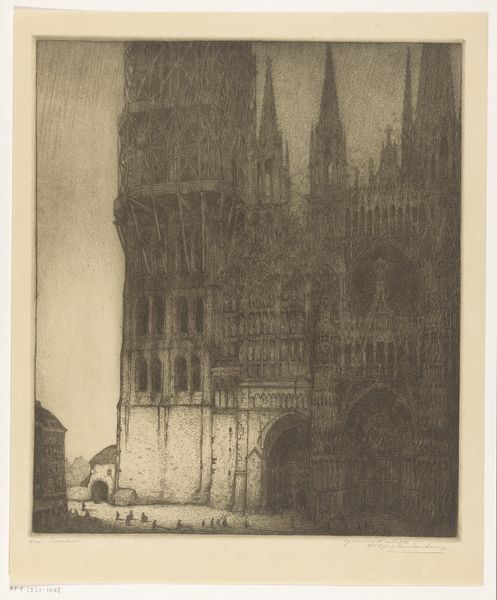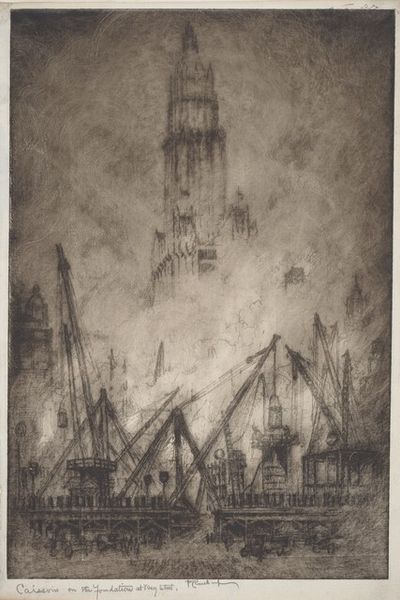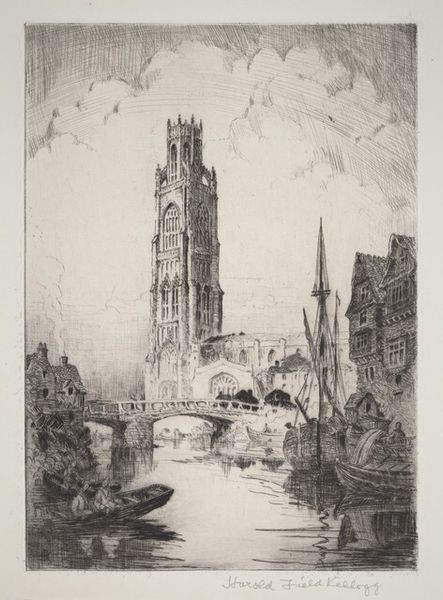
print, etching
#
art-deco
# print
#
etching
#
cityscape
#
realism
Copyright: National Gallery of Art: CC0 1.0
Curator: Kerr Eby created this print, titled "No. 1 Wall Street," in 1930. It’s an etching showing the construction of the Irving Trust Building in Lower Manhattan. Editor: It’s immediately striking how this feels so somber, so gray. There's a wonderful, delicate balance between these architectural titans and this very messy, intricate groundwork. Curator: Well, this was right at the beginning of the Depression, and that really colored people’s perception of finance and Wall Street. The gothic revival spire of Trinity Church in the background competes with the angular skyscraper. Eby was probably interested in juxtaposing the old with the new. Editor: Exactly. You've got these vertical thrusts pushing against the horizontal scaffolding. Then you've got this real dynamic tension as our eyes move around. It is all jagged diagonals—there's very little resolution in the composition. I wonder if the medium adds to the sense of unease. Curator: Etchings have that gritty quality and the tonal range makes for interesting shadow play. And remember, during this time, skyscrapers were symbols of capitalism's success but were also viewed as representations of societal inequality. Editor: So the visual noise created through hatching and cross-hatching enhances the sense of turmoil that's going on both outside and within the image itself. Curator: Right. Eby made many images documenting social inequality in America; “No. 1 Wall Street” definitely participates in this criticism of economic disparities. The very small figures in the foreground accentuate the power structures in place at the time. Editor: Yes. Looking at the layering of these textures... the more time I spend looking, the more I start to feel like it's more than a building under construction. Instead it functions as a metaphorical statement about progress versus tradition. Curator: The layering can be interpreted that way for sure. Seeing “No. 1 Wall Street” now, we can look at it as a symbolic marker from a very significant period of social transformation and political consciousness. Editor: For me, Eby harnessed the building site's chaotic energy so wonderfully here. It makes a powerful argument about a fleeting moment within modernity.
Comments
No comments
Be the first to comment and join the conversation on the ultimate creative platform.
